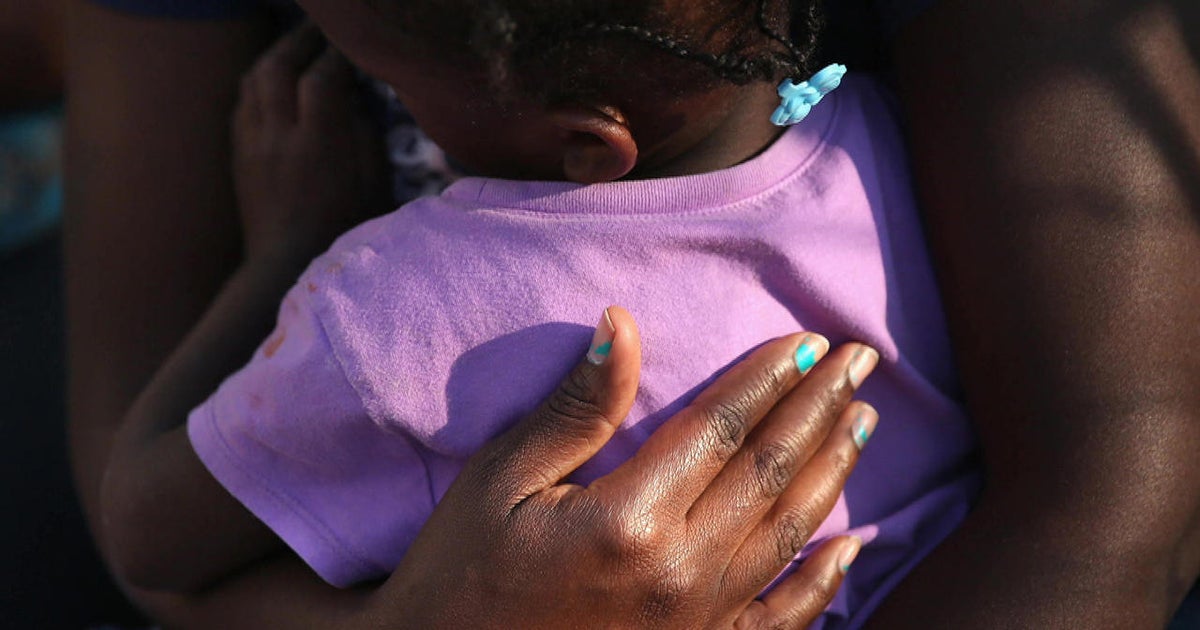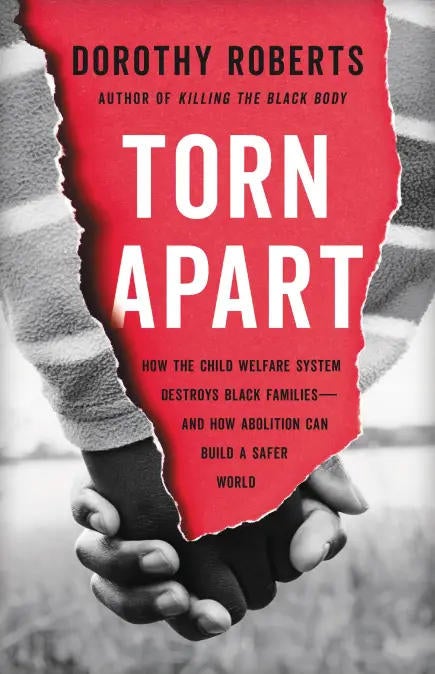Fostering tragedy: Experts say system designed to protect children can break up families

In June 2017, at a family picnic in a park in Aurora, Colorado, Vanessa Peoples noticed that one of her young sons had slipped away. Peoples, who was studying to be a nurse, is not the first parent to take her eyes off a child; it happens all the time. But a bystander’s call to police resulted in child abuse charges that have upended her life.
“They treated me as if I really done harm to my children, and I didn’t harm anyone,” she told correspondent Erin Moriarty.
A month after the picnic, a caseworker from Adams County Children & Family Services came unannounced to her home. Peoples, who was downstairs doing laundry, didn’t hear the doorbell, so, again, police were called.
Peoples recalled, “At that moment, I’m coming up the stairs thinking I am going to get my kids, and I have a gun pointed at my face.”
Even when it was clear the children were not home alone, the police didn’t leave. When Peoples objected to the way police treated her mother who had just come home, officers physically restrained her, partially dislocating her shoulder in the process.
“When the officer had slammed me down on the floor, I looked my son dead in his face, and it was just the look of pain,” Peoples said. “I was treated like an animal. I wasn’t treated like a human being.”
Peoples, who had no criminal history, was taken to jail, and charged with child abuse and obstructing an officer. “The part that really got to me, I seen the look on that social worker’s face when it happened, and she didn’t say anything. She just stood there.”
Erica Grossman, a civil rights lawyer, sued the Aurora Police on Peoples’ behalf, accusing officers of excessive force. “There are certainly times when the state needs to be involved,” she said. “This was not even approaching one of those cases.”
Moriarty asked, “Was there any indication that there were weapons inside the home?”
“No, there was absolutely zero indication.”
A police internal investigation determined that the use of force was lawful, but the department settled the case, and the charge against Peoples for obstruction was dropped. Still, the charge alleging child abuse was not.
Grossman said, “Once you ring the bell of the state, it’s a tragedy – you can’t un-ring it. It’s almost impossible to get out of that.”
Colorado child welfare officials say they cannot discuss the case, but that the violence that Peoples experienced is unusual. Still, what happened next is not. Peoples was required to follow a strict service plan, much at her own expense, and allow twice-weekly inspections by caseworkers. “I had to pay for a drug test,” she said. “I had to pay for parenting classes. I also had to pay to be on probation.”
Unless the treatment of a child makes headlines (for example, when a child dies), Americans rarely think about the agencies charged with child protection. So, the system that handles more than 3.5 million cases a year gets little public scrutiny, in part because the people most affected are poor.
University of Pennsylvania professor Dorothy Roberts, who has written extensively about the child protection system, said, “Part of the propaganda that this system uses to convince the public that it’s actually a benevolent caring system is the very terms that are used to describe it: Child welfare, foster care, child protection. I prefer the term ‘family policing system,’ because that really describes what the system does – to investigate, to accuse, to tear apart.”
Basic Books
And the numbers don’t lie, said Roberts. Black families are twice as likely as White families to be impacted. “More than half of Black children in America will be subjected to a child welfare investigation at some point before they reach age 18,” she said.
The care of poor or abandoned children used to be handled by private charities and orphanages. But when the growing use of X-rays in the 1960s revealed that children were suffering abuse at home, the government got involved. Today, fewer than 20 percent of cases allege actual physical abuse; the great majority involve neglect.
Roberts said, “Neglect is usually confused with poverty. Neglect is defined by most states as parents failing to provide the resources that children need, like clothing or food or secure housing. And those are usually caused because parents simply can’t afford them.”
According to the Children’s Defense Fund, every two minutes a child is removed from his or her home. There are now more than 400,000 children in foster care.
Moriarty asked, “Would you agree there are probably some cases of neglect where – extreme poverty or a parent with a terrible drug problem – kids would be better off in another environment?”
“Yes, of course, there are cases, and again these are extreme case,” Roberts replied. “But first of all, this system doesn’t spend enough attention or resources on what could be given to that family to keep it together.”
In the summer of 2017, Samantha Mungai was a 22-year-old single mom of a four-year-old girl living in Missouri, struggling to pay rent and childcare. One night her life completely changed. “One dumb mistake that I literally wish I could take back every single day,” she said. “We had gotten behind on rent, and so they gave us an eviction notice: ‘If you don’t pay this on time, you know, you have to leave.'”
Mungai, who danced at a club at night, says she couldn’t find a babysitter, and left her daughter in the apartment alone.
“You had to know how risky that was,” said Moriarty. “There could be a fire. She could get sick and she was alone. You could just not have gone to work that night.”
“Yeah, that’s what I thought, but then we would have been evicted, and then what do I do next?” Mungai replied.
But when she got home that morning, she discovered her child had gone to the apartment of a neighbor, who called police. The child was placed in foster care.
Mungai agreed to follow a plan to get her back. She was only allowed to see her daughter once a week. Although records show her daughter struggled to adjust to foster care, Mungai was never allowed to spend time alone with her, or to bring her home.
Alan Dettlaff, dean of social work at the University of Houston, who once a child protection caseworker himself, said that service plans often set parents up for failure: “What we have as a system now is a system that’s responding to harm, and inflicting an intervention on those children that causes further harm. [Parents] have to go to counseling, they have to go to parenting classes. When parents would say, ‘I can’t take this much time off work to go to these classes,’ the case worker will say to the parents, ‘Well, this is about your child. That should be your priority. You need to figure it out.'”
In Mungai’s case, she was also required to pay child support payments to the county to reimburse them for the foster care. And soon, weeks away from her daughter became months, and then a year-and-a-half.
Aysha Schomberg, associate commissioner for the U.S. Children’s Bureau, affirmed that requiring parents to pay for foster care support also increases the amount of time the child is away from the parents. “That’s not what we want,” she said.
This past summer, her office recommended that state and county agencies stop charging struggling parents for foster care.
But, said professor Roberts, that’s not enough. She and others say the entire system needs to change. “This system is a $30 billion system. It would be so much more beneficial for children to take those $30+ billion and give it directly to families for meeting their children’s needs, to spend it on housing, on clothing, on food, on medical care.”
Moriarty asked Schomberg, “What do you say to people who say this system needs to be completely dismantled?”
“We don’t want 400,000 children in foster care,” she replied. “There may be children and families out there that need the help and are getting the help that they need.”
But these agencies wield great power over families’ lives. Mungai, who now also has a four-year-old son, said she believed she’d get her daughter back. But while her case files noted steady improvement, in 2019 her parental rights were terminated.
Moriarty asked, “That means you can’t see her?”
“I’ll get in trouble if I do, that’s what they say.”
“Can’t talk to her?”
“No.”
“Can’t find out how she is doing?”
“Unh-uh.”
Mungai’s appeal was denied. Among the reasons cited by the court: she failed to take a parenting class, a psychological assessment, and she missed scheduled visits with her daughter.
The Clay County Children’s Division and the Missouri Department of Social Services said they cannot speak about specific investigations.
Mungai said, “What bothers me is that she doesn’t think I love her. She will grow up thinking that I don’t care, and I didn’t try and I left her and I gave up.”
It’s been more than five years since Vanessa Peoples’ son wandered off in the park. She never lost her children, yet Peoples is still dealing with the repercussions. “I live with this every day because it’s a nightmare,” she said.
In January 2018, Peoples pled guilty to reckless endangerment of a child rather than risk jail; but the conviction makes her unable to get a job in nursing.
Moriarty asked attorney Erica Grossman, “She has a criminal history now for reckless endangerment of a child, for what? For allowing a child to wander off in a park?”
“Yeah. There’s nothing more,” Grossman replied. “It’s absolutely insane.”
Peoples said, “I can’t get jobs. I can’t even get housing. I’m still living with my mom. I should be able to have a home for my children and myself, but the fact that someone else intervened in my life, I am stuck at zero.”
For more info:
- Civil rights lawyer Eric Grossman, Holland, Holland, Edwards & Grossman LLC, Denver
- Dorothy Roberts, director, Program on Race, Science and Society, University of Pennsylvania
- “Torn Apart: How the Child Welfare System Destroys Black Families – and How Abolition Can Build a Safer World” by Dorothy Roberts (Basic Books), in Hardcover, eBook and Audio formats, available via Amazon, Barnes & Noble and Indiebound
- Alan Detlaff, dean of Graduate College of Social Work, University of Houston
- Children’s Bureau, Department of Health and Human Services
Story produced by Sari Aviv. Editor: George Pozderec.
Share this news on your Fb,Twitter and Whatsapp
Times News Network:Latest News Headlines
Times News Network||Health||New York||USA News||Technology||World News

